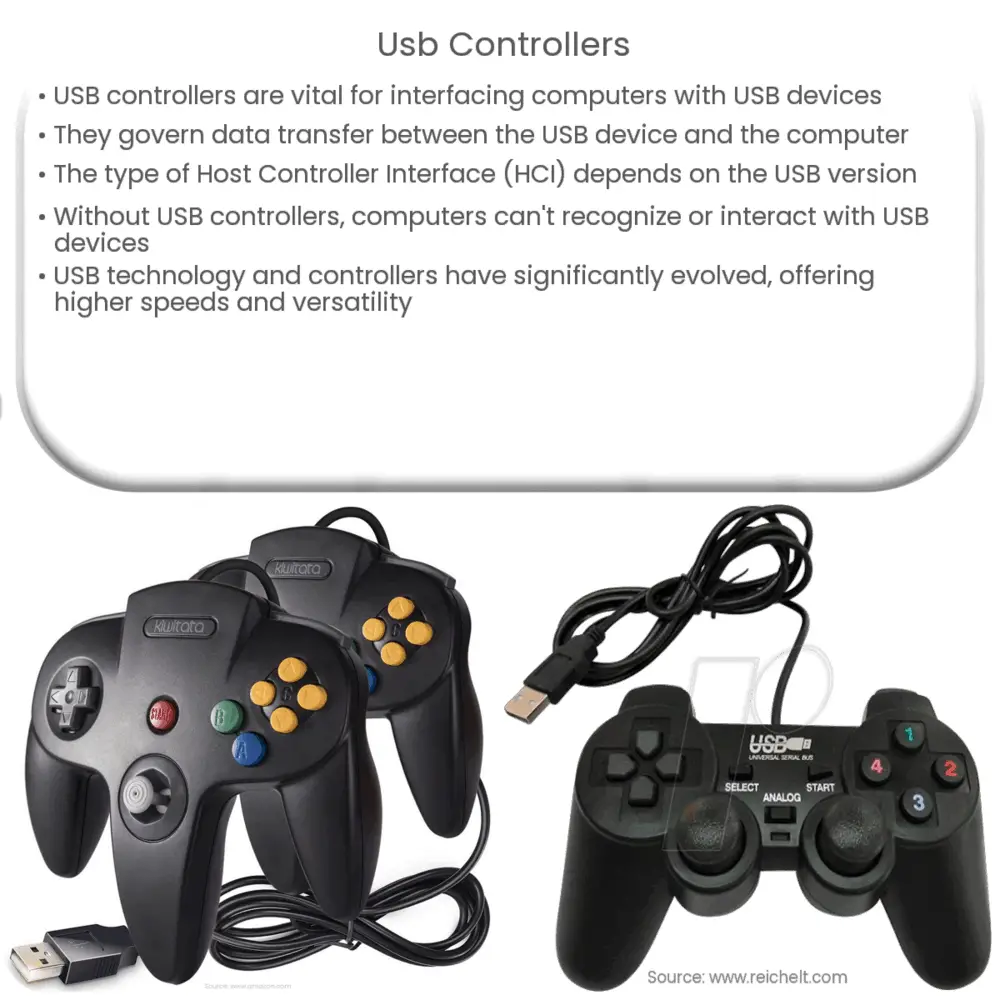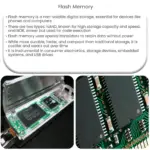Explore the importance and function of USB Controllers, their role in data transfer, and how they’ve evolved with USB technology.

Understanding USB Controllers
When it comes to the various mechanisms that make our computers and electronic devices work seamlessly, USB controllers are indispensable. A USB controller is a piece of hardware that allows a computer to interface with USB devices, such as keyboards, mice, flash drives, and many more.
The Basics of USB Controllers
USB stands for Universal Serial Bus. As the name suggests, it’s a standard method of connection that allows different devices to communicate with each other. The role of the USB controller, also known as the host controller, is essential in this process as it governs the data transfer between the USB device and the host computer.
- Host Controller Interface (HCI): It’s the layer of the USB software protocol that provides an interface to USB hardware. The type of HCI depends on the USB version in use. Some examples include UHCI (Universal Host Controller Interface) for USB 1.1, OHCI (Open Host Controller Interface) for USB 1.1 and 2.0, and xHCI (eXtensible Host Controller Interface) for USB 2.0, 3.0, and above.
- USB Ports: These are the physical interfaces that we often see on the sides of laptops and on the front or back of desktops. They are the points where USB devices are connected. The number of USB ports a system can support is determined by its USB controller.
The Importance of USB Controllers
Without a USB controller, your computer wouldn’t be able to recognize or interact with any USB device plugged into it. The USB controller interprets data from the USB, translates it into a language the computer can understand, and vice versa. For instance, when you connect a flash drive to a USB port, the USB controller acknowledges the new device, facilitates the communication, and thus, allows you to access the files on the drive.
The Evolution of USB and USB Controllers
USB technology has evolved significantly since its inception. Starting from USB 1.0 with a transfer rate of 12 Mbps, we have seen a radical transformation in USB technology, culminating in USB4, which can deliver up to 40 Gbps. The evolution has not just been in speed but also in power supply capacity, ease of use, and versatility, with the latest USB Type-C becoming a common standard. This progression has required corresponding advances in USB controller technology, with the development of new HCIs to support these changes.
How USB Controllers Work
When you plug a device into a USB port, the host controller detects it and communicates with the device to determine its functions and capabilities. This process, called enumeration, is crucial for establishing a successful communication pathway between the device and the host computer.
The controller then creates a data structure called an endpoint for each type of transfer that the device can handle. These endpoints help the controller manage the data transfer effectively, ensuring smooth communication between the device and the host computer.
Variations of USB Controllers
As mentioned earlier, there are various types of USB controllers, with the type determined by the version of USB they support. For example, an EHCI (Enhanced Host Controller Interface) is designed for USB 2.0, while the xHCI is used for USB 3.0 and above. The different controller types offer varying data transfer rates and capabilities, with newer controllers generally providing better performance and more features.
- UHCI and OHCI: These are typically used for USB 1.1 devices, with a maximum speed of 12 Mbps. UHCI was developed by Intel, while OHCI was developed by a consortium led by Microsoft and 3Com.
- EHCI: This is used for USB 2.0 devices, supporting a speed of up to 480 Mbps. It was developed by the USB 2.0 Promoter Group, an organization formed by several major tech companies.
- xHCI: This is for USB 3.x devices and supports speeds of up to 5 Gbps for USB 3.0, 10 Gbps for USB 3.1, and 20 Gbps for USB 3.2. It was developed by the USB 3.0 Promoter Group.
Conclusion
In summary, USB controllers are integral components of our computer systems, enabling efficient communication between the host computer and USB devices. They play a crucial role in interpreting and managing data transfer, making it possible for users to connect a wide range of devices to their computers seamlessly. With the constant evolution of USB technology, these controllers continue to advance, supporting higher data transfer rates and more features, thereby enhancing our digital experiences.




